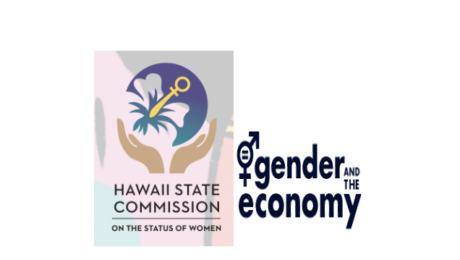Making the Biden-Harris Economic Recovery Plan Gender Responsive
A recent Gender & COVID-19 brief (also a sign on letter) “Making the Biden-Harris Transition Plan for COVID-19 gender-responsive” outlines how the Biden-Harris Transition Plan in the US can be made more gender-responsive. The brief is a starting point in highlighting the potential within the Biden-Harris Transition Plan, using economic recovery as an entry point, with recommendations based on the best practices for feminist economic recovery from COVID-19.
The Biden-Harris Economic Recovery Plan is constructed around four challenges which must be overcome to rebuild the nation. The brief applies a gender lens for each challenge, emphasizing that for these efforts to be truly equitable, it is critical that they are not implemented in isolation and an intersectional gender lens is used in policy making and interventions.
- Mobilize American manufacturing and innovation to ensure that the future is made in America, and in all of America: Targeted support to business owners from under-represented groups in the forms of emergency funds, skills, training and mentorship; and direct funding to businesses in women-majority sectors, including caregiving and social enterprises, should be a centerpiece of the policy.
- Mobilize American Ingenuity to build a modern infrastructure and an equitable, clean equitable future: Investment in care infrastructure is also green, as it supports jobs for women (in the care sector) and men (in the construction sector), and provides services communities need to thrive. Implementing stimulus programs focused on ‘green jobs’ should proactively plan for gender equity and include formal programming for women, with special emphasis on displaced workers, communities of color, and women who are in recovery from incarceration.
- Mobilizing American talent and heart to build a 21st century caregiving and education workforce: Prioritize universally accessible, free (or highly subsidized) childcare and long-term elder care as central to its economic recovery plan. This can in part be accomplished through the designation of direct public funds to existing regulated and licensed care services. Direct public funds should also be used to invest in measures to keep workers safe and expand the number of care spaces available. Importantly, many workers who provide the backbone of the care economy are informally employed, wherein they have limited or no access to social protection. As such, government assistance schemes should be expanded to include family and informal caregivers, and an expedited path to permanent resident status should be created for precarious immigrant care workers so that they can access those schemes. This has a much greater effect than simply creating employment in the care sector but facilitates women’s participation across the economy.
- Mobilize across the board to advance racial equity in America: There can be no gender justice while there is racial injustice. Racial and gender inequities are inextricably linked to the economy. For example, Black, racialized, and immigrant women are disproportionately represented as personal support workers, cleaners, and in other essential but low-paid occupations – many of which are in the informal economy – that do not provide paid sick leave or family leave.
READ FULL BRIEF: Solomon A, Morgan R, Wenham C, Smith J, Nacif Pimenta D, Mueller V, Herten-Crabb A and Hawkins K (2020) Making the Biden-Harris Transition Plan for COVID-19 gender-responsive, Gender and COVID-19 project
This blog was authored by Jenn Brown, CWE-GAM Communications Assistant
Hawai’i and Canada Provide Lessons for Feminist Economic Recovery from COVID-19
The need for an inclusive, gender-equitable recovery from the COVID-19 pandemic is slowly gaining recognition as it lays bare and exacerbates inequities in economic, social, health, and environmental policies and programs.
The Hawai’i State Commission on the Status of Women convened a working group to develop and share principles and practices for implementing a gender-responsive and feminist response to COVID-19, culminating in the publication of Building Bridges, Not Walking on Backs: A Feminist Economic Recovery Plan for COVID-19.
Similarly, the YWCA Canada and the Institute for Gender and the Economy (GATE) at the University of Toronto’s Rotman School of Management published a joint assessment, A Feminist Economic Recovery Plan for Canada: Making the Economy Work for Everyone. The plan highlights critical principles and provides actionable recommendations for the government to develop and implement post-pandemic recovery policies that are equitable and inclusive of all marginalized people.
Together, the Canadian and Hawaiian plans provide a roadmap to recovery through gender-transformative policy-making. Both are built on an intersectional analysis of the impact of the pandemic and call for an approach to economic recovery that examines and confronts the root causes of inequality, including but not limited to patriarchy, ableism, queerphobia, white supremacy, colonialism, classicism, and racism.
A recent brief by Alexandra Solomon, Kate Hawkins, Rosemary Morgan of the Gender and COVID-19 Working Group describes the intersecting, complementary, and mutually reinforcing elements of the two frameworks and echoes the call for feminist economic recovery. It provides a collection of best practices for the core tenets of post-pandemic policy-making which should be echoed and adapted by policy-makers from other settings.
Key Recommendations to Policymakers:
- Pandemic responses should be underpinned by data that is disaggregated by sex and other markets of inequity at the national and subnational level. This data should be made public and used in decision making.
- Women-led organizations, feminist academics and women’s experiences and ideas should be at the center of recovery efforts in government bodies, official consultations and online spaces.
- The provision of universally accessible, free childcare and long-term eldercare should be central to economic recovery plans and attempts to ‘open up’ the economy. Precariously employed immigrant care workers should be provided with an expedited path to permanent resident status.
- Austerity-induced budget cuts should be avoided as they impact most greatly on the poor, women and other marginalized groups. Instead policy-makers should strengthen public welfare assistance (such as unemployment benefit) and labor rights (such as paid sick leave, family leave and a guaranteed living wage).
- Special stimulus funds should be designated for high risk groups, such as those who are not eligible under existing government schemes, are disproportionately experiencing financial hardship and poverty, and already face barriers to accessing their rights to health, safety, independence and education.
- Invest in universal, affordable, and sustainable access to water, sanitation, hygiene and housing, and prioritize closing the gender digital divide.
- Support women in female dominated economic sectors particularly hard hit by the pandemic as well as historically marginalized women workers, such as Indigenous women and sex workers.
- A feminist recovery is aligned with a ‘green’ recovery and the two should be considered in conjunction.
- Revisions of fiscal and monetary policies should be taken as opportunities to address inequality in wages, employment, and quality of life.
- Health systems should be restructured to focus on Universal Health Coverage and to address problems in service access and quality due to sexism, colonialism and white supremacy. Tackling the social determinants of health should be a priority.
- All hate, violence, and oppression against women, gender-diverse people, and Indigenous, Black, and racialized communities must be addressed in the COVID-19 recovery.
READ FULL BREIF:
Solomon, A., Hawkins, K., and Morgan, R. (2020). Hawaii and Canada: Providing lessons for feminist pandemic recovery plans to COVID-19.The Gender and COVID-19 Working Group.
This blog was authored by Shirin Arslan, Program Manager for the Care Work and the Economy Project
- Published in COVID 19, Policy, Policy Briefs & Reports


